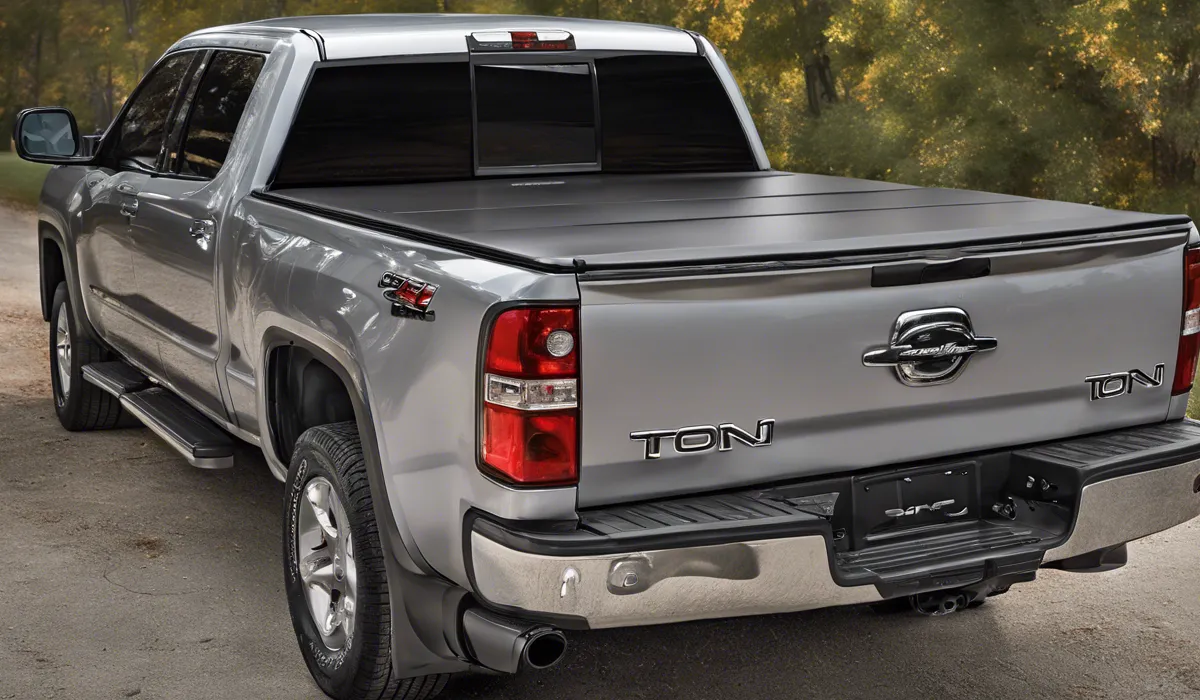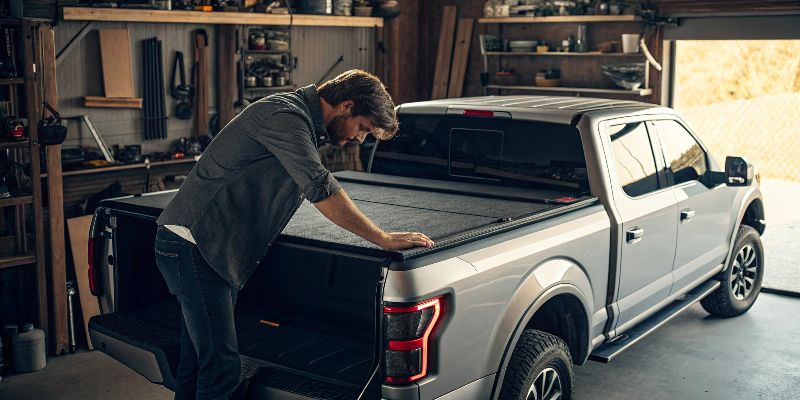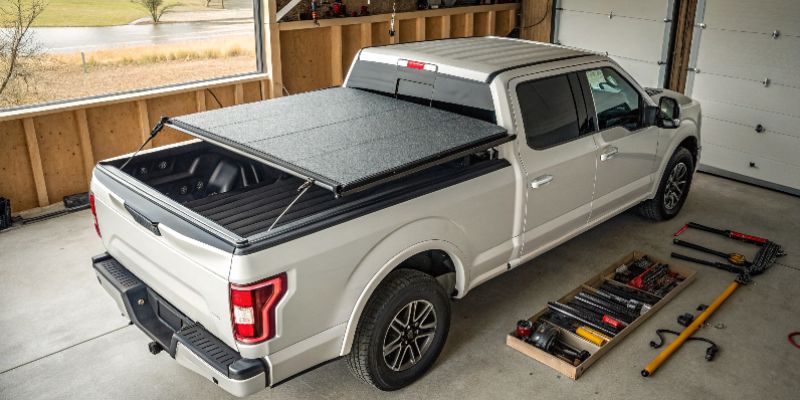To adjust a tonneau cover, start by loosening the clamps on the bed rails. Slide the cover to the desired position for tension or alignment. Retighten the clamps securely. Check the cover’s operation and adjust as needed for a smooth slide or roll.
Understanding the Basics of Tonneau Cover Adjustment

Explanation of What a Tonneau Cover Is
A tonneau cover is a crucial accessory for any pickup truck owner.
It’s a protective cover that fits over the bed of your truck, providing security for your cargo and improving the overall aerodynamics of your vehicle.
Tonneau covers come in various styles, including roll-up, folding, and retractable, each designed to meet different needs and preferences.
Importance of Proper Tonneau Cover Adjustment
Adjusting your tonneau cover correctly is vital because it ensures that the cover functions as intended.
A well-adjusted cover protects your cargo from the elements, reduces the risk of theft, and can even enhance fuel efficiency by minimizing air drag.
Proper adjustment also prevents unnecessary wear and tear, extending the life of your cover.
Common Reasons for Needing an Adjustment
Over time, a tonneau cover may require adjustment due to reasons such as changes in temperature that cause materials to expand or contract, general use that leads to shifting or sagging.
Keeping your cover well-adjusted ensures ongoing performance and protection.
Step-by-Step Guide to Adjusting Your Tonneau Cover

Pre-adjustment Checks (Alignment, Cleanliness, Weather Conditions)
Before you start the adjustment process, inspect the cover for alignment issues, ensure that the truck bed and rails are clean, and consider the weather—ideally, make adjustments on a warm day when the materials are more pliable.
This preliminary step sets the stage for a successful adjustment.
Tools and Materials Needed for the Job
You’ll need a few basic tools to adjust your tonneau cover: a wrench or socket set for tightening, a measuring tape for alignment, and possibly a lubricant for the rails.
Gather these tools beforehand to streamline the adjustment process.
Loosening and Tightening Mechanisms
Begin by loosening the clamps or latches that hold the tonneau cover in place.
This will allow you to reposition the cover as needed.
Once you’ve made your adjustments, tighten these mechanisms back into place, ensuring they are secure but not over-tightened.
Aligning the Cover to the Truck Bed
Slide the cover into the desired position on the truck bed, using the measuring tape to ensure it’s centered and aligned with the bed rails.
Proper alignment is crucial for the smooth operation of the cover and to prevent gaps that could allow moisture or debris to enter.
Adjusting Tension and Sealing
After aligning the cover, adjust the tension to ensure it’s taut and smooth.
This helps to repel water and reduces flapping at higher speeds.
Check the sealing around the edges of the cover.
The seal should be tight to prevent water and dust from entering the truck bed.
Final Checks to Ensure Proper Fit and Operation
Close and open the cover several times to ensure it operates smoothly.
Look for any signs of rubbing or resistance, and make small incremental adjustments as necessary.
Once you’re satisfied, your tonneau cover should be ready for the road.
Troubleshooting Common Tonneau Cover Adjustment Issues

Dealing with Over-tightened or Under-tightened Covers
An over-tightened cover can strain the fabric or material, while an under-tightened cover might flap in the wind or fail to protect your cargo.
Adjust the tension rods or mechanisms incrementally to find the right balance, ensuring the cover is neither too tight nor too loose.
Addressing Weather-stripping and Sealing Problems
If you notice leaks or drafts, inspect the weather-stripping or seals around the edges of the cover.
Over time, these can wear out or become damaged. Replacing the sealing can restore the protective capabilities of your tonneau cover.
Solutions for Misaligned Side Rails or Cover
Misaligned side rails or a cover that doesn’t sit flush can lead to functioning issues.
Realign the rails by loosening their mounting hardware, adjusting their position, and retightening.
Ensure the cover is correctly positioned before securing it back in place.
Tips for Maintaining Your Tonneau Cover After Adjustments
Regular maintenance can keep your tonneau cover in top shape.
Clean it with appropriate cleaners, inspect for wear and tear, lubricate moving parts, and check the tension periodically.
With proper care, your cover will provide years of reliable service.
FAQs About Adjusting a Tonneau Cover
How do I start adjusting my tonneau cover?
To begin adjusting your tonneau cover, loosen the clamps located on the bed rails of your truck.
What is the next step after loosening the clamps on my tonneau cover?
Once the clamps are loosened, slide the cover to the desired position to achieve the correct tension or alignment.
How do I secure the tonneau cover after adjusting it?
After adjusting the cover to the desired position, retighten the clamps securely to ensure the cover is fixed in place.
How can I check if the tonneau cover has been adjusted properly?
Check the operation of the tonneau cover by ensuring it smoothly slides or rolls without any obstruction or unevenness.
What should I do if the tonneau cover is still not properly adjusted after the initial attempt?
If the tonneau cover is not properly adjusted on the first try, repeat the adjustment process, checking for tension and alignment, and then securely retighten the clamps.
Final Thoughts
Adjusting a tonneau cover involves a straightforward process of loosening the clamps on the bed rails, shifting the cover to achieve the correct tension or alignment, and then retightening the clamps.
It’s important to always confirm the cover operates smoothly after any adjustments, making further tweaks if necessary to ensure optimal functionality.
